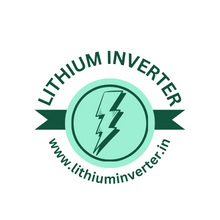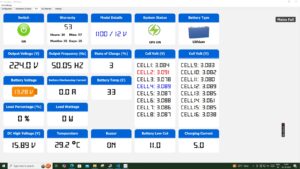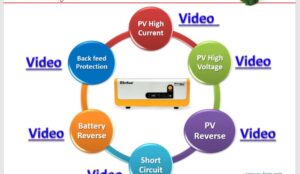How much loss does a transformer have?
- Load Losses (Copper Losses): These losses occur due to the resistance of the transformer’s windings. As current flows through the coils, it encounters resistance, which dissipates some of the energy as heat.
- Impact of Load: Unlike no-load losses, load losses vary depending on the amount of current flowing through the transformer. Higher load means higher current and consequently, greater I2R losses.
- Minimizing Load Losses:
- Conductor Material: Using conductors with low resistivity, like copper, helps reduce I2R losses.
- Winding Design: Optimizing the design and cross-sectional area of the windings can also minimize resistance and hence, load losses.
How much loss does a transformer have?
Introduction to Transformer Losses
Transformers aren’t perfectly efficient and these losses are important to consider for their overall performance.
Here’s a breakdown of the two main types of transformer losses you mentioned:
-
Load Losses (Copper Losses): These losses occur due to the resistance of the wires in the transformer’s coils. As current flows through the coils, it encounters resistance, which dissipates some of the energy as heat. This loss increases with the square of the current flowing through the transformer.
-
No-Load Losses (Iron Losses): These losses happen within the transformer’s core due to the constantly changing magnetic field. There are two main contributors to iron losses:
- Hysteresis Loss: When the magnetic field in the core reverses direction (which happens continuously with AC current), the core material experiences a tiny energy loss like a magnetic “memory” effect.
- Eddy Current Loss: The changing magnetic field induces small circulating currents within the core itself, called eddy currents. These currents also create heat loss.

How much loss does a transformer have?
The amount of loss a transformer has depends on two main factors:
-
Load Losses (I2R): This loss varies depending on the current flowing through the transformer.
-
No-Load Losses (Iron Losses): These losses are constant and occur even when there’s no load on the transformer. They are produced by the characteristics of the core material and the fluctuating magnetic field.
Therefore, the total loss of a transformer is the sum of the load losses and the no-load losses.
Unfortunately, there’s no single answer to “how much loss” a transformer has because it depends on its specific design, size, and operating conditions. However, transformers are generally very efficient devices. Most well-designed transformers have a full load efficiency between 95% and 98.5%, meaning they lose only 1.5% to 5% of the input power.
Here are some additional points to consider:
- Manufacturers specify the efficiency of a transformer at different load levels.
- Choosing the right size transformer for the application is crucial. An oversized transformer will have higher no-load losses even when lightly loaded.
No-load losses are caused by the magnetizing current needed to energize the core of the transformer and do not vary according to the loading on the transformer.
- Cause: No-load losses are caused by the magnetizing current needed to establish the magnetic field in the core, independent of the actual load on the transformer.
- Components: The main contributors are hysteresis and eddy current losses within the core laminations. These are material properties and occur even with no current drawn from the transformer.
- Minimization: Using high-quality core steel with low hysteresis and eddy current losses, and employing thinner laminations, both help reduce these no-load losses.
How much loss does a transformer have?
Values of Transformer Losses (A and B Values)
The A and B factors are a crucial concept in evaluating the cost-effectiveness of transformers, especially for large users like utilities and industries. Here’s a breakdown of what you explained:
- Importance of Transformer Losses: Transformer losses represent wasted energy and translate to additional costs over the transformer’s lifetime. Considering these losses is vital for choosing the most economical transformer.
- A and B Factors: These factors are used to convert the future value of no-load and load losses into a present-day cost.
- A Factor: Represents the equivalent present cost of future no-load losses, which are constant and depend on system capacity needs.
- B Factor: Represents the equivalent present cost of future load losses, which vary with the amount of energy used.
- Benefits of A and B Factors:
- Allows for a more comprehensive economic comparison of transformers by considering both upfront cost and future energy losses.
- Enables buyers to factor in the cost of supplying system capacity (no-load losses) and the cost of energy use (load losses).
- Who Uses A and B Factors:
- Electric utilities: They are heavily invested in transformers and optimizing their total cost of ownership is crucial.
- Large industrial customers: Their high-energy usage makes considering future load losses significant.
- Alternative for Smaller Users: Smaller end users often use life-cycle cost evaluation methods, which include upfront costs, maintenance costs, and potentially replacement costs over the life of the transformer.
How much loss does a transformer have?
When evaluating various transformer designs, the assumed value of transformer losses (A and B values) will contribute to determining the efficiency of the transformer to be purchased. Assuming a high value for transformer losses will generally result in the purchase of a more efficient unit; assuming a lower value of losses will result in the purchase of a less efficient unit. What value of losses should be assumed?
Unveiling Transformer Losses: An In-Depth Overview
The total owning cost (TOC) method provides an effective way to evaluate various transformer initial purchase prices and cost of losses. The goal is to choose a transformer that meets specifications and simultaneously has the lowest TOC. The A and B values include the cost of no-load and load losses in the TOC formula:
TOC = NLL x A + LL x B + C
Where,
TOC = capitalized total owning cost,
NLL = no-load loss in watts,
A = capitalized cost per rated watt of NLL (A value),
LL = load loss in watts at the transformer’s rated load,
B = capitalized cost per rated watt of LL (B value),
C = the initial cost of the transformer including transportation, sales tax, and other costs to prepare it for service.
How much loss does a transformer have?

The A value is an estimate of the present value of future capital cost (nonload- dependent) items at a given point in time. It can vary over time as utilities re-evaluate their costs periodically. (In other words, the A value is the answer to the question, what is a watt of no-load loss over the life of the transformer worth to me today?) Even if there is no load, there is capital that is devoted to fixed capacity to generate, transmit, and distribute electricity, which contributes to the A value. The loading that may change daily on the transformer does not affect the no-load loss value. It is calculated using the following formula:
A = [SC + (EC x 8760)] x 0.001 / [FC]
= Cost of No-Load Loss in $/watt
Where,
SC = Annual Cost of System Capacity in $/kW-year (SC is the levelized annual cost of generation, transmission, and primary distribution capacity required to supply one watt of load to the distribution transformer coincident with the peak load).
EC = Energy Cost (EC is the levelized annual cost per kWh of fuel, including inflation, escalation, and any other fuel-related components of operation or maintenance costs that are proportional to the energy output of the generating units).
8,760 = hours per year
FC = Fixed Charge on capital per year (FC is the levelized annual revenue required to carry and repay the transformer investment obligation and pay related taxes, all expressed as a per-unit quantity of the original).
0.001 = conversion from kilowatts to watts.
How much loss does a transformer have?
Similar to the way the A value is determined, the B value is an estimate of the present value of future variable, or load-dependent, cost items at a given point in time. (In other words, the B value is the answer to the question, what is a watt of load loss over the life of the transformer worth to me today?) The B value can also change over time as utilities reevaluate their costs periodically, but once determined, it is a constant value for a given transformer purchase. The cost of load losses, or B value, is calculated using the following formula:
B = [(SC x RF) + (EC x 8,760 x LF)] (PL) 2 (0.001) / (FC)
= Cost of Load Loss Cost $/watt
Where,
RF = Peak Loss Responsibility Factor (RF is the composite responsibility factor that reduces the system capacity requirements for load losses since the peak transformer losses do not necessarily occur at peak time).
LF = Annual Loss Factor (LF is the ratio of the annual average load loss to the peak value of the load loss in the transformer).
PL = Uniform Equivalent Annual Peak Load (PL is the Levelized peak load per year over the life of the transformer. Transformer life cycle is defined as the useful life of the asset and is usually assumed to be 30-35 years).
How much loss does a transformer have?
For custom-designed transformers, manufacturers optimize the design of the unit to the specified A and B values resulting in a transformer designed to the lowest total owning cost, rather than one designed for the cheapest first cost.
In situations where A and B values have not been determined (or the end user does not utilize or specify them), such as occur in commercial or small industrial applications, the suggested technique to maximize transformer efficiency is to obtain the no-load and full-load loss values of a specific transformer, in watts. This method is discussed in the article Transformer Life-Cycle Cost, elsewhere on this website.
How much loss does a transformer have?



